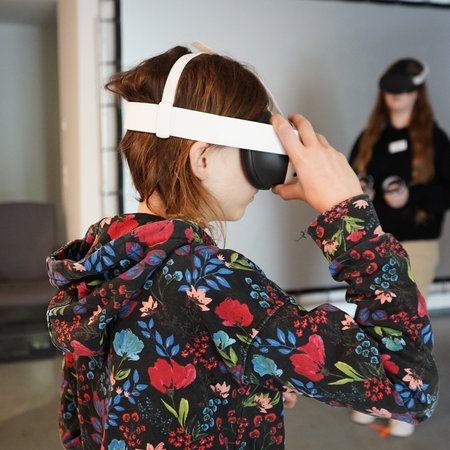Towards the Sun
In the early morning hours of 10 February, the Solar Orbiter space probe started its journey into space. The mission of the European Space Agency (ESA) will explore the Sun at close range. On board is the X-ray telescope STIX, which was developed and built with involvement from the Leibniz Institute for Astrophysics Potsdam (AIP).
Solar Orbiter will approach the Sun reaching a minimum distance of 0.28 astronomical units (1 AU = the distance between Earth and the Sun). Among other things, it will, for the first time, provide images of the Sun's polar regions, which are very difficult to observe from Earth. The scientists also hope to be able to observe solar storms over a longer period of time.
Solar Orbiter is equipped with ten instruments to collect scientific data. Four of these instruments measure the direct environment of the space probe, whereas the remaining six observe the surface and atmosphere of the Sun. One of them is the X-ray telescope STIX (short for: Spectrometer/Telescope for Imaging X-rays), which was developed and built by an international team led by the University of Applied Sciences Northwestern Switzerland (FHNW). During an eight-year development process, AIP scientists created the basic design of the telescope’s imager, manufactured mechanical parts and participated in the assembly and testing of the instrument. The latter two are of immense importance because the probe and its modules have to withstand strong vibrations and large temperature fluctuations – between +60 and -30 degrees Celsius in the probe’s interior.
X-rays are generated in the outer solar atmosphere, the corona, and provide information about the activity of the Sun. With STIX, astronomers plan to investigate how solar flares are produced and how they can affect the Sun, the space between the planets and even the Earth, as well as our increasingly technological society.
“I am particularly looking forward to this launch and hope that it will be successful, since I have been working on the concept of Solar Orbiter for 25 years,” states Gottfried Mann, head of the STIX team at AIP. “Our active participation in the X-ray telescope on NASA's RHESSI spacecraft gave us the opportunity to use our expertise to build STIX. Starting in 2022, the instrument will take X-ray images of the Sun. We hope that this will give us a better understanding of the mechanisms of eruptions on our home star,” explains Mann.
Solar Orbiter will be launched on 10 February at 5:03 a.m. German time with an Atlas-V launcher provided by NASA from Cape Canaveral in Florida, USA. It will then gradually approach the Sun via complex manoeuvres. The probe will perform a so-called gravity assist near Earth and a total of eight near Venus. It will use the gravity of the planets to reduce or increase its speed. This way, the orbit around the Sun will be adjusted, with Solar Orbiter moving outside of the Earth's plane to observe the Sun’s poles. The mission is designed for a duration of ten years, during which time Solar Orbiter will provide answers to many open questions in solar physics at close range and from a unique perspective.
Further information
ESA-website on Solar Orbiter
http://bit.ly/Solar_Orbiter_ESA
More information about STIX
Images
Artist’s impression of Solar Orbiter in front of the Sun.
Big screen size [1000 x 1000, 120 KB]
Original size [7016 x 7016, 1.9 MB]
Flight model of STIX imager (front) and detector electronics box (rear).





